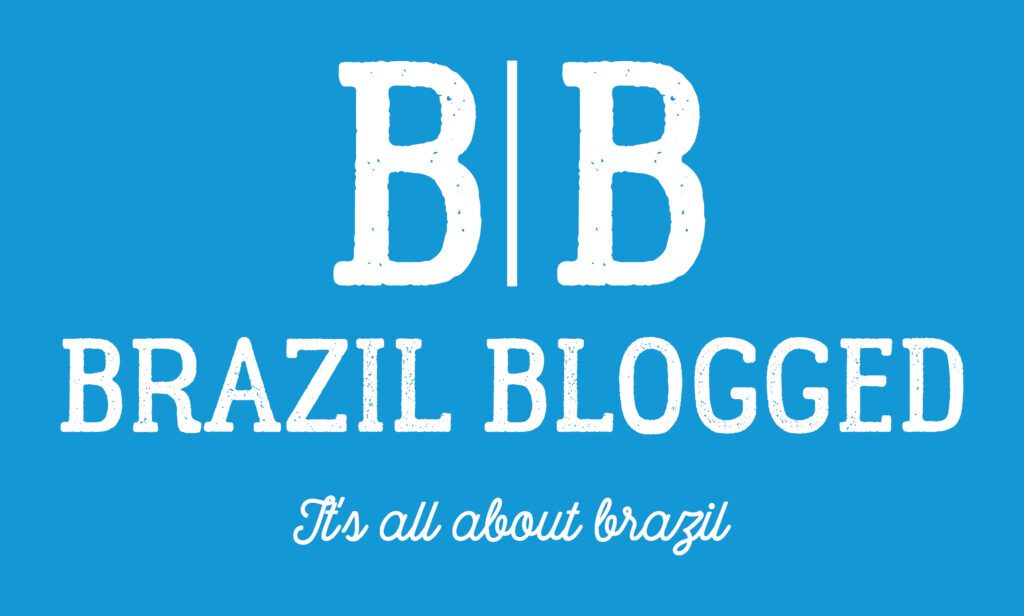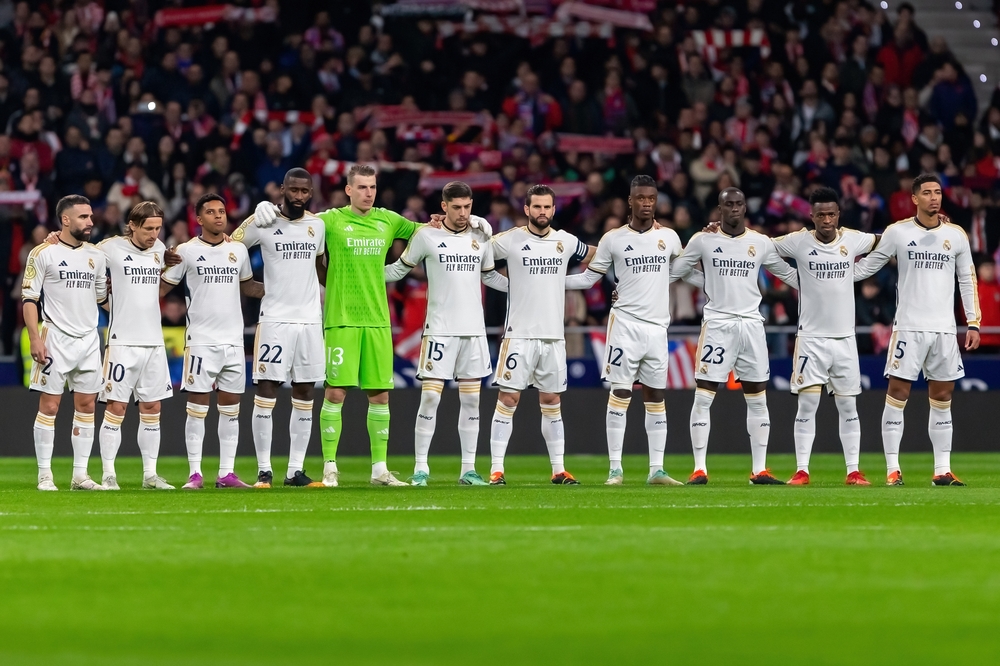Table of Content
ToggleIntroduction
MERCOSUR, an acronym for the Southern Common Market, stands as a prominent organization promoting economic and political cooperation in Latin America. Established with the signing of the Asunción Treaty in 1991, it aimed to foster a common market that would integrate the economies of its member countries. Over the years, it has expanded its objectives to include the harmonization of legislation and the coordination of political stances among its member states, striving to enhance regional stability and create a united international presence.

The bloc initially comprised Argentina, Brazil, Paraguay, and Uruguay, with Venezuela joining later, although its membership has been suspended since 2016. MERCOSUR’s structure includes various decision-making institutions such as the Common Market Council and the Common Market Group, which facilitate consensus-building and advance the implementation of agreed-upon policies. Despite its achievements in promoting tariff reduction and regional integration, MERCOSUR faces ongoing hurdles such as structural asymmetries between member states and external trade negotiations, reflecting the dynamic complexity of regionalism in Latin America.
Key Takeaways
- MERCOSUR is a regional entity focused on economic integration and political cooperation in Latin America.
- It was founded by Argentina, Brazil, Paraguay, and Uruguay with the aim of establishing a common market.
- While MERCOSUR has promoted regional cohesion, it also navigates considerable challenges within an evolving global context.
Historical Background of MERCOSUR

MERCOSUR’s history is rooted in regional integration efforts, formalized through foundational treaties. The economic and political agreements aimed to enhance cooperation and economic development between member countries.
Treaty of Asunción
On March 26, 1991, the Treaty of Asunción was signed by Argentina, Brazil, Paraguay, and Uruguay, marking the official establishment of MERCOSUR (Mercado Común del Sur or Southern Common Market). The treaty laid the groundwork for a common market that aimed to promote free trade and the fluid movement of goods, people, and currency. The objectives were economic integration and the establishment of a common external tariff to foster competitiveness in international markets.
Protocol of Ouro Preto
The Protocol of Ouro Preto, signed on December 17, 1994, supplemented the Treaty of Asunción by establishing the organizational structure for MERCOSUR. It provided the legal and institutional framework necessary for its function, defining the decision-making process and granting MERCOSUR international legal status. As such, MERCOSUR was not only a shared market but also a political entity able to interact with other countries and international organizations.
Member Countries

MERCOSUR, an economic and political bloc in Latin America, aims to promote free trade and fluid movement of goods, people, and currency. The member countries hold various levels of participation, ranging from full to associate members, and there are also cases of suspended memberships due to specific circumstances.
Full Members
Full membership in MERCOSUR signifies complete integration into the bloc’s economic agreements and policies. The full members include:
- Argentina: A founding nation with a significant role in the integration process.
- Brazil: As the largest economy, Brazil is central to MERCOSUR’s influence and activities.
- Paraguay: A smaller economy within the bloc that contributes to the collective market.
- Uruguay: The fourth original member, promoting regional cooperation and open trade.
Note: While Venezuela is also a full member, it has been suspended since December 1, 2016.
Associate Members
Associate members of MERCOSUR enjoy preferential trade agreements but do not partake in the customs union. The associate states are:
- Bolivia: Awaiting ratification to become a full member, yet currently participates as an associate.
- Chile: An early adapter of associate status, focusing on expanding its economic reach.
- Colombia: Seeking broader market access through its association with MERCOSUR.
- Peru: Engages with MERCOSUR while also being a member of the Andean Community.
- Ecuador: Has joined as an associate member to gain economic benefits without full membership responsibilities.
- Guyana
- Suriname
Suspended Members
Suspended members are countries that have temporarily lost their membership rights due to political or other disruptions. The criteria for suspension are established by the UDEM Protocol.
- Venezuela: The country’s membership has been suspended due to political and human rights concerns.
Each member state, whether full, associate, or suspended, plays a role in the complex ecosystem of Latin American economic collaboration shaped by MERCOSUR’s policies and agreements.
Institutional Framework
The institutional framework of MERCOSUR is integral to its function and is composed of several key entities that govern the bloc’s activities. These entities facilitate the smooth operation of the common market, ensure compliance with international law, promote democracy, and coordinate efforts towards regional integration.
Common Market Council
The Common Market Council is the highest-level decision-making body of MERCOSUR. It is responsible for the political leadership and the creation of policies for economic integration. Composed of Ministers of Foreign Affairs and the Economy from member states, the Council meets semiannually to define priority areas and ensure the continuation of the integration process.
Common Market Group
Below the Council, the Common Market Group acts as the executive body. It plays a pivotal role in proposing measures for the implementation of the common market and resolutions of the Council. The Group is comprised of four permanent members from each state, typically from ministries of foreign affairs, the economy, and central banks. They elaborate on the legislative measures that member countries must incorporate into their national legislation for MERCOSUR directives.
MERCOSUR Parliament
The MERCOSUR Parliament, established to enhance democratic governance, serves as a forum for regional parliamentary debate. It has advisory functions and aims to harmonize the legislation of member states. The Parliament’s goal is to give a democratic dimension to the regional integration process, strengthening the voices of the people within MERCOSUR countries.
These institutions are pillars of MERCOSUR, ensuring that the organization not only fosters economic cooperation but also adheres to democratic principles and solidifies its role in the international community.
Economic Aspects
MERCOSUR, as a regional trade agreement, significantly influences the economic fabric of its member countries. The bloc focuses on fostering economic development through trade agreements, the implementation of a common external tariff, and the coordination of economic policies among its members.
Trade Agreements
MERCOSUR provides a platform for member countries to engage in regional trade with a focus on reducing barriers and creating a more fluid economic space. By negotiating free trade agreements with external partners, MERCOSUR aims to increase market access for its members, stimulate investment, and contribute to the gross domestic product (GDP) growth of each country. Such agreements also serve to consolidate their position in international trade negotiations.
Common External Tariff
The adoption of a Common External Tariff (CET) is a pivotal aspect of MERCOSUR’s strategy to harmonize its members’ trade policies with non-member countries. This tariff regime facilitates the creation of a common market, simplifying the transactional framework, and aiming for equitable economic conditions across member states. It acts as a unifying force that stands essential to the economic integrity of the bloc.
Economic Policies
In terms of economic policies, MERCOSUR places emphasis on coordination and cooperation. The goal is to align macroeconomic policies to support economic development and to establish a common trade policy that benefits all member states equally. Sound economic policymaking aims to improve employment rates and investment opportunities, thereby fostering sustainable growth across the region. The success of such policies is reflected in the overall GDP improvements and economic stability of the member countries.
Political and Legal Cooperation
MERCOSUR represents a prominent example of regionalism in Latin America, characterized by its commitment to fostering political and legal cooperation among member states. This regional bloc not only advances economic integration but also emphasizes strengthening democratic institutions and ensuring compliance with international law.
Democratic Institutions
Member nations of MERCOSUR have collectively prioritized the reinforcement of democratic processes and governance. They’ve established mechanisms to promote dialogue and decision-making that reflect the democratic values common to the union. By supporting democratic institutions, MERCOSUR aims to create a stable political environment conducive to cooperation and integration.
International Law and Treaty Compliance
The framework of MERCOSUR is built upon a foundation that respects international law, ensuring that member states align with globally recognized legal standards. Critical to this framework is the institutionalized compliance with treaties, which not only solidifies regional cooperation but also harmonizes relations with extra-regional entities. This adherence to international law underpins the legal security and predictability vital for effective regional integration.
Cultural and Social Integration
MERCOSUR’s approach to cultural and social integration emphasizes the rich tapestry of diversity in Latin America. This process fosters cooperation in education and cultural exchanges while also focusing on improving labor conditions and employment opportunities.
Education and Culture
Education initiatives within MERCOSUR seek to promote the understanding and valorization of the region’s ethnic, linguistic, and cultural diversity. Programs are designed to increase the accessibility of quality education across member countries. Collaboration extends to cultural sectors, with policies aimed at the preservation and promotion of Latin American artistic and historical heritage, facilitating cross-border cultural activities.
Labor and Employment
In the realm of labor and employment, MERCOSUR lays the groundwork for safe and equitable workplaces that acknowledge and respect the region’s religious diversity and social inclusivity. These efforts are not only limited to the recognition of diverse workforces but also include the implementation of policies aimed at harmonizing labor standards and improving the quality of life for workers throughout the Southern Cone.
Comparative Regionalism
Comparative regionalism examines the similarities and differences of regional integration efforts across the world. In Latin America, the Southern Common Market, commonly referred to as MERCOSUR, serves as a poignant case study in comparison with other entities such as the European Union (EU) and the Pacific Alliance.
MERCOSUR and European Union
MERCOSUR, consisting of several South American nations, shares an integration model with the European Union focused on economic and political collaboration. Unlike the EU, which has deeply integrated institutions and a long history of political unity, MERCOSUR is younger and places a stronger emphasis on intergovernmental approaches over supranational governance. Additionally, whilst MERCOSUR strives for economic cooperation inspired by the EU model, it has faced challenges such as political instability and asymmetrical economies amongst its members that have hampered efforts to achieve a level of integration comparative to the EU’s.
Relevant cases and concepts:
- Interregional cooperation: The ongoing dialogue between MERCOSUR and the EU, aimed at establishing a bi-regional association agreement, provides insights into the dynamics of interregionalism.
- Normative influence: The EU’s regulatory standards and norms have influenced MERCOSUR’s policies, despite the distinct nature of the latter’s member states’ economies and political systems.
- More detailed explorations on this topic can be found in research on EU–MERCOSUR relations.
MERCOSUR and Pacific Alliance
The Pacific Alliance, formed by Latin American countries on the Pacific coast, contrasts with MERCOSUR by adopting a model of ‘open regionalism’. This approach is characterized by unilateral tariff reductions, fewer restrictions on goods, services, and people’s movement, and a strong commitment to fostering ties with Asia-Pacific economies. In contrast, MERCOSUR has often been protective of its internal markets and oriented towards a customs union framework, resulting in a trade bloc that is less open to external markets compared to those of the Pacific Alliance.
Key distinctions:
- Trade focus: MERCOSUR emphasizes the harmonization of external tariffs and prioritizes its internal market, while the Pacific Alliance focuses on expanding member states’ access to the Asia-Pacific economies.
- Integration depth: Pacific Alliance’s strategies are designed to quickly adapt to global trade changes, whereas MERCOSUR’s progress towards deeper integration is often slower due to its structure and political complexities.
A comparative analysis of these different integration efforts in Latin America can offer valuable lessons for both regions involved.
Challenges and Critiques
MERCOSUR has faced numerous challenges and critiques that question its effectiveness in promoting balanced economic development and political cohesion among its member states.
Economic Asymmetries
MERCOSUR, which includes Brazil, Argentina, Paraguay, Uruguay, and Venezuela (currently suspended), exhibits significant economic asymmetries. Brazil’s economy, for example, substantially outweighs that of other member countries, leading to imbalances in trade and investment flows. Smaller economies, like Uruguay and Paraguay, often struggle to compete within the bloc, which magnifies concerns over fairness and equity. These disparities have sparked debates about the need to improve mechanisms for redistributing benefits and enhancing competitiveness, especially during times of financial crisis.
Political Disputes
Political disputes have also hampered MERCOSUR’s progress. The impeachment of a president in Paraguay (2012) and the political turmoil in Venezuela (which led to its suspension from the bloc) underscore the fragility of regional agreements amid internal political instability. Disagreements among member countries over the direction and principles of the bloc often translate into stalled negotiations and policy paralysis. The impact of such political disputes not only stalls the socio-economic goals of MERCOSUR but also hinders long-term integration efforts.
Infrastructure and Communication
Infrastructure and communication networks are vital components of MERCOSUR’s capacity to facilitate trade and integration among its member countries. Effective transportation systems and advanced technology are imperative for ensuring the efficient flow of goods and information across the region, impacting various sectors from water to navigation.
Transportation
MERCOSUR countries have made efforts to improve transportation infrastructure to bolster regional connectivity. This involves enhancing road networks, which are crucial for intra-regional trade, and investing in projects to streamline navigation along major waterways. A significant initiative includes the development of the Hidrovia Paraná-Paraguay, a waterway project intended to enhance river navigation and promote cost-effective cargo transport.
Technology and Communication
In the arena of technology and communication, MERCOSUR aims to establish cohesive telecommunications frameworks. This initiative seeks to connect the region and reduce disparities in access to technology. Key aspects involve upgrading telecommunications infrastructure to support digital connectivity and fostering innovation that accommodates the rapid expansion of e-commerce within the trading bloc.
Trade and Market Expansion
MERCOSUR, a leading trade bloc in Latin America, has actively enhanced trade and market expansion through a progressive reduction of tariffs and the facilitation of a common market among its members. The bloc’s efforts have significantly increased intra-regional exports and imports, contributing to the advancement of Latin American integration.
Exports and Imports
Since its inception, MERCOSUR has experienced a substantial growth in intra-bloc trade, especially between Argentina and Brazil. There has been an emphasis on liberalizing reciprocal trade, which has stimulated exports and facilitated a more dynamic exchange of goods and services within the region. The removal of trade barriers has permitted member countries to diversify their economies by expanding the range of goods they export and import.
Free Trade Expansion
MERCOSUR has moved beyond the initial stages of a preferential trade agreement towards a more integrated free-trade zone. The ultimate goal is to realize the benefits of a Latin American Common Market, where goods, services, and factors of production can move freely. This ambition is consistent with the bloc’s alignment with the Latin American Integration Association and negotiations related to the Free Trade Area of the Americas. It seeks to enhance regional economic stability and integration by promoting a sustained and inclusive development framework, in line with the principles of a free-trade association.
Strategic Alliances and Global Relations
MERCOSUR, the Southern Common Market, is a prominent regional trade bloc in Latin America and has made strategic efforts to bolster its global relations, particularly with China and the United States. These relationships are fundamental to MERCOSUR’s economic growth, political influence, and societal advancements.
Relationship with China
China has become one of Latin America’s largest trading partners, and MERCOSUR’s ties with China are characterized by a complex tapestry of cooperation and economic exchange. The bilateral trade between China and MERCOSUR nations has witnessed substantial growth, with China importing commodities such as soybeans and iron ore from the bloc. The economic linkages are further strengthened through investments in infrastructure and energy projects within MERCOSUR member countries. However, these economic advances have also led to discussions regarding the trade balance and the need for diversified trade to avoid over-reliance.
Relationship with the United States
The United States and MERCOSUR have a history of both collaboration and contention in their trade relations. While the United States is a significant trade partner for MERCOSUR countries, various stances on hemispheric trade policies and protectionism have at times led to tension. Nonetheless, there is ongoing dialogue and negotiation aimed at fostering cooperation, such as efforts to promote small and medium-sized enterprises (SMEs) and initiatives to address common challenges in innovation and competitiveness. Cooperation in education, research, and development further signals a commitment to strengthening ties beyond just trade.
Frequently Asked Questions
This section addresses common inquiries about MERCOSUR, offering precise details regarding its objectives, membership, impact on trade, significance of its headquarters, achievements, and organizational structure.
What are the objectives of the MERCOSUR trade bloc?
MERCOSUR aims to promote free trade and the fluid movement of goods, people, and currency among its member countries. It seeks to advance these economies by fostering integration and sustainable development.
Which countries are full members of MERCOSUR?
The full members of MERCOSUR are Argentina, Brazil, Paraguay, and Uruguay. Venezuela’s membership has been suspended since December 2016.
How does MERCOSUR impact international trade within Latin America?
MERCOSUR facilitates international trade within Latin America through reduced tariffs and trade barriers among member countries, enhancing economic cooperation and regional competitiveness.
What is the significance of the MERCOSUR headquarters location?
The MERCOSUR headquarters is located in Montevideo, Uruguay, symbolizing the commitment to equality and balance among the member countries, irrespective of their size and economic power.
What are some notable achievements of MERCOSUR since its inception?
Since its formation, MERCOSUR has successfully established a common market that enhances trade and investment opportunities by unifying external tariffs among member countries.
Can you explain the structure of MERCOSUR and its decision-making process?
MERCOSUR’s structure is based on the Common Market Council and the Common Market Group, which are responsible for the bloc’s decision-making. Decisions are generally made by consensus among the member states.












